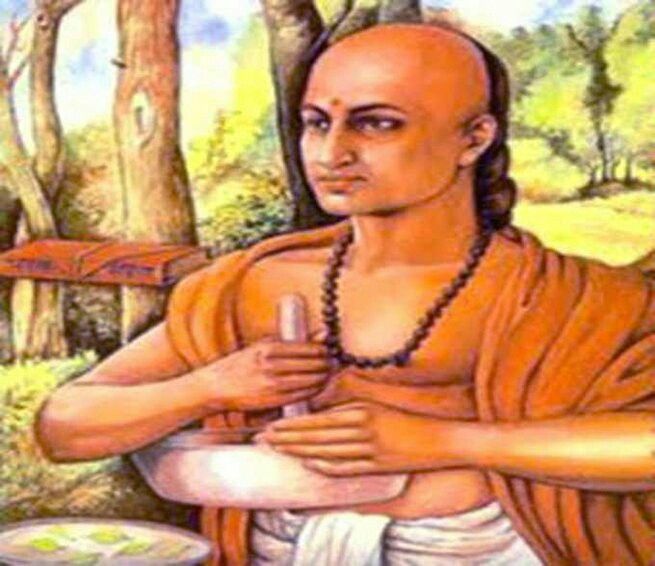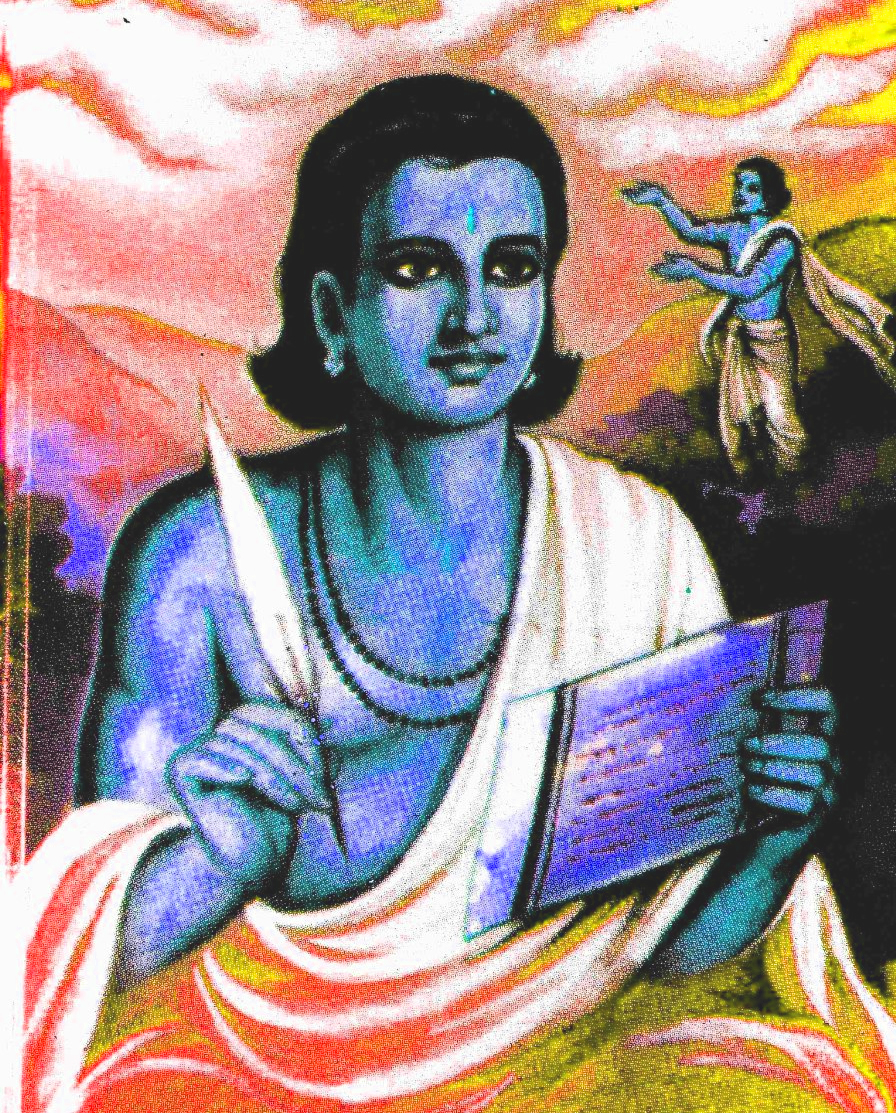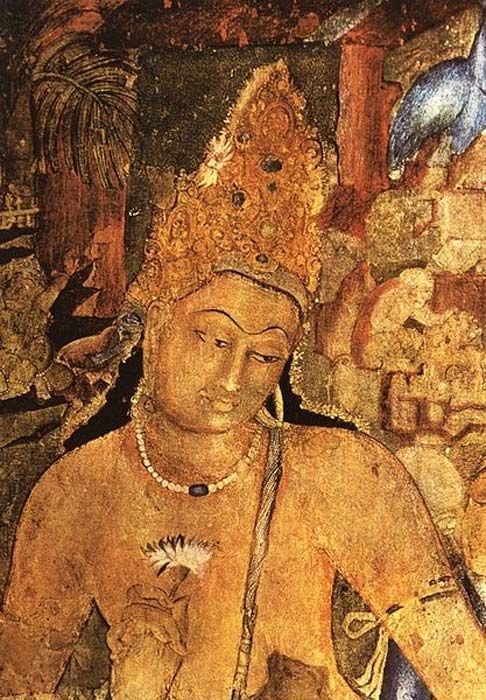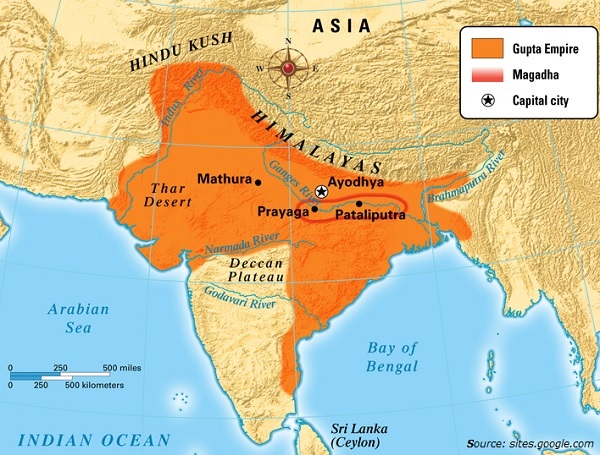During the colonial rule of the British, they tried to malign the Golden age of Indian History as Dark Age. The concept of the Dark Age put forward by early colonial historian H.H. Wilson, V.A. Smith. These historians deliberately negatively interpreted Indian History so that Indian pride & self-esteem could be shattered. This concept was also used to justify the establishment of British rule.
Concept of Dark Age
Dark Age refers to the phase of human age during which progress was completely absent & all-round degeneration was witnessed. The 5 centuries of the post-Mauryan ages were portrait as Dark Age by colonial historians. It was emphasized that India underwent political fragmentation during this age & Indians were defeated repeatedly by foreign invaders. No progress of any kind was witnessed in this period as per colonial historians such as H.H Wilson, V.A Smith.
The reality of Post Mauryan Age
Closer examination of various dimensions of human life clearly reveals that five centuries of Post Mauryan Age constitute a period of remarkable progress. The so-called darkness was no visible. In fact, this was the age of golden progress in many spheres of human life. This progress was visible in-
- Economic
- Sculpture
- Archaeology
- Paintings
- Religions
Progress was witnessed in political life in this age & it was not the age of political degeneration. Though the Mauryan Empire disintegrated at the same time new political forces emerged in India. The Satvahana Empire emerged covering Deccan & Central India. Chola rulers Kanikela (200 BC) & Ellalan (2nd century AD) were so powerful that they conquered Sri Lanka as well.

The Indo-Greeks Shakas & Kushanas come from outside the moment they entered India they were no longer foreign. In fact, for 1st time these rulers ruled over Central Asia & China with their capital in India. Remarkable progress witnessed in the field of literature also during Post Mauryan Age. This progress was in South & North. Patanjali wrote Mahabhashya & in the court of Pushymita Shunga.

Charak Samhita was written by physician Charak in 1st century AD. Sanskrit began to use quite commonly during this age for 1st time it became the language of inscription (Junagarh) progress of literature was not limited to Sanskrit only but remarkable progress witnessed in the Tamil language. Sangam’s literature was composed of an assembly of poets held at the capital of Pandyas rulers of Tamil Nadu.
This all-round progress of Post Mauryan Age covered the whole of Indian History. The ports of South India such as Muziris (Kranganor, Kerala) & Ancamedu (Pondicherry) participated actively in Indo-Roman trade.
Gupta Age as Golden Age of Ancient History
The golden age refers to that phase of human history during which a very high level of progress was attended in various spheres of human life such as progress inclusive. The concept of the Golden age was put forward by Nationalist historians to counter the negative propaganda being unleashed by the colonial historians. This colonial historian portrait certain periods of Indian History as the Dark Age to shatter the self-esteem & sense of pride of Indians.
The nationalist historian portrait the Gupta period as the Golden age of Indian history because hardly anything is known about Mauryan Age. Sources of information about the Gupta period were plenty.
Basis of Goldenness of Gupta Age
Gupta Age was the golden age of Political Unity. The emergence of the Gupta Empire resulted in the political unification of India after a long gap of almost 500 years.
With the decline of the Mauryan Empire, unity & integrity was nowhere visible. Several regional principalities had emerged in India. As a result of this political fragmentation Indian rulers failed to counter foreign invasion successful Shakas, Kushanas & Indo-Greek ruled over many parts of India.
This political fragmentation of India was brought to end by rising of Gupta. The whole of North India from the Himalayas to Vindhyas was ruled by Gupta directly & they enjoyed indirect control over peninsular India. Such kind of unity & integrity has been rare in Indian History.
Golden Age of liberal & progressive administration
The political and administrative system of the Gupta Empire was liberal & progressive. There was no excessive centralization in administration as was the case under Mauryan. Gupta rulers focused on the welfare & progress of people. Grants were issued to temples, education institutes, etc. Nalanda University was established by Kumar Gupta first.

Several officials were appointed by Gupta rulers to look after various branches of administration. The bureaucracy was not so powerful that it could misuse its authority to exploit the masses. Officers were appointed after a thorough exam of their character. According to Junagarh inscription of Skanda Gupta at the time of appointment of Parnadatta (Government of Saurashtra) Gupta council discussed his candidature the whole night.
The judicial legal system was liberal for 1st time civil & criminal laws were separately codified. They were separately coded to deal with civil & criminal matters. Civil code was known as “Dharmasthania” & criminal code was known as “Kantakasodhana”. According to Fahiyan the Penal code (Punishment) was a liberal. Tortures were absent & there was no capital punishment even in case of repetitive rebellion only the right hand was cut.
Gupta administration was efficient or effective, common public enjoyed complete security of life & property as informed by Kalidas & Fahiyan. Elements of decentralization were present in the Gupta administration. Guilds enjoyed a high degree of autonomy. The participation of local representative elements in district admin was another remarkable feature of the Gupta political system.
According to contemporary source Vishayapati (Head of district admin) was assisted by a council comprising “Nagal Srashti” (Chief Bankers of City), Prathma Kulika (Head of Artisans community), Prathma Kayastha (Head of scribes – writer’s community) & Sarthavaha (Head of a mobile guild). Members of this council were known as Vishya Mahathara (elders of the district).
Golden Age of remarkable progress in Religion
The trends of liberal in progressive reforms in Brahmanical religion which commenced during the Post Mauryan Age, culminated during the Gupta period. This reformed Brahmnical religion was simple, liberal, progressive & pro-people. It revolved around the idea of Vishnu as supreme deity & it was known as Vaishnavism.
The Brahmanical rituals & ceremonies were no longer predominant among people. Vaishnavism was free from this complex costly & violent ceremony. These ceremonies were limited to the ruling class. The priestly dominance was no longer visible in the field of religion. The idea of Bhakti was a dominant feature of Vaishnavism. The Vaishnavism philosophy emphasizes the direct relationship between God & Devotee.
The concept of incarnation emerged during the Gupta Age. It was used to bring about the integration of various faiths & traditions prevailing in India. All the prominent deities begin to be identified as various incarnations of Vishnu. Even Buddha & Mahavira were terms of as an incarnation of Vishnu.
The idea of Shakti worship (Parvati) also gained popularity during the Gupta Age. Goddess Durga riding lion as depicted on Gupta coin in the existence of the same. The concept of Purusharsha became popular during the Gupta Age. These are four in number that is Dharma, Artha, Kama, and Moksha.
Purusharstha were the four main objects of human life. These were the aim to be pursued by people for higher living. Sun worship & Kartikeya were also prevalent during Gupta’s age. Despite fact that Vaishnavism was the religion of Gupta rulers, peoples were allowed to practice their faith freely without any state intervention. In this way, the religious life of the Gupta age was based on toleration & the idea of peaceful co-existence.
Golden Age of remarkable progress in literature
Gupta’s age was the classical and golden age of Sanskrit literature. Several great scholars such as Kalidas lived during Gupta. A large number of prominent works were composed during this period. Kalidas wrote dramas, romantic poems & epics. Bhasha was the author of “Swapna Vasav Datt”.

Shudrak was the author of Mruchakatikam. Vishnu Gupta the author of Panchatantra. Amarasimha the author of Amarkosh. Aryabattiyam was written by Aryabhatta. Sushruta Samhita was written by Shushrut. Puranas & epics got their final touches during the Gupta age. Such kind of remarkable progress in literature was never witnessed during any other period of Indian History.
Golden Age of remarkable progress in Indian Culture
The glory of Indian culture reached far & wide during the Gupta Age. Entire South-East Asia became a cult extension of Indian Culture. As a result of the concept of greater Indians gained popularity.
Gupta Age as Classic Golden Age
Classic golden age refers to that phase of human history during which the progress of such a high level was witnessed during different spheres of human life that is it became a model for future generations. Classicism manifests itself in form of a climax. The progress of such a high level was never seen before or afterward.
The Gupta age is widely recognized as the classical age of Ancient Indian History. This classicism of the Gupta period can be conceived in the light of the development of the pre-Gupta period & development that followed in Gupta’s age.
Elements of classicism in the Gupta period
The political unity & integrity witnessed during Gupta’s age was having few parallels. No such unity was witnessed for much classicism before & after the Gupta period. Progress in Sanskrit literature also reflects the classicism of Gupta’s age. The temple architecture witnessed unparalleled progress during the Gupta period Nagara style of temple archaeology emerged a large number of temples were built.

Progress in the field of sculpture also reflects classicism because Mathura, Gandhar, Amravati School continued to flourish & at the same time Banaras School. Paintings found in Ajanta & Bagha caves also reflect classicism. Progress in Science & Technology witnessed during the Gupta age was never seen before or afterward. Music & dance also flourished during the Gupta period. Not only as a private effort but also under the patronage of the state. The political and administrative system was also having elements of classicism because for many centuries after the Gupta period such liberal, progressive, efficient & effective admin was never witnessed.
Limitation of Classicism
The classicism of the Gupta period can be accepted in degree not in absolute terms because it was the age of the imperial political system where participation of people in affairs of state was negligible. This high-level progressive in various spheres of life was limited to the upper section of people. Hardly any classicism was found in the life of common masses.

